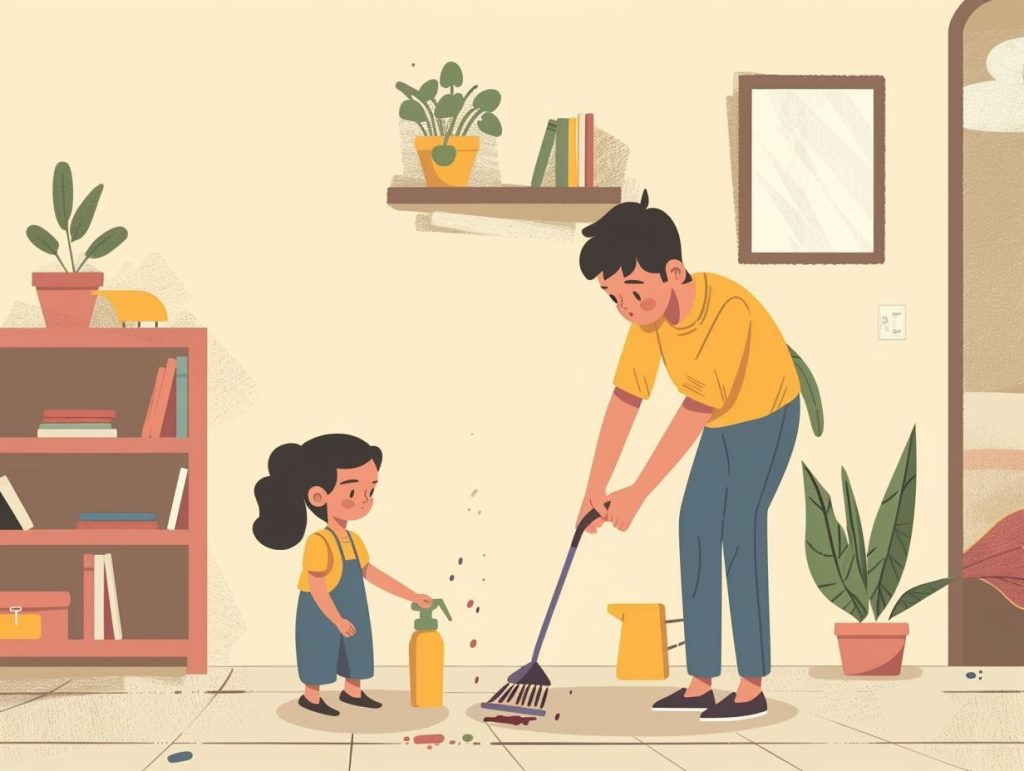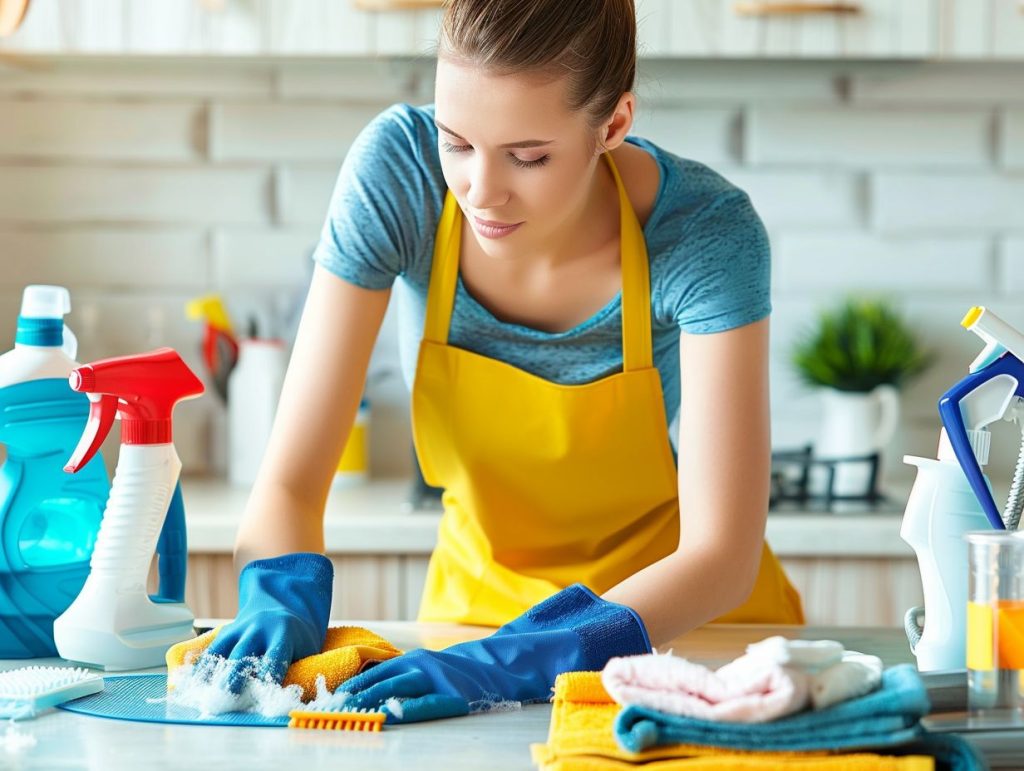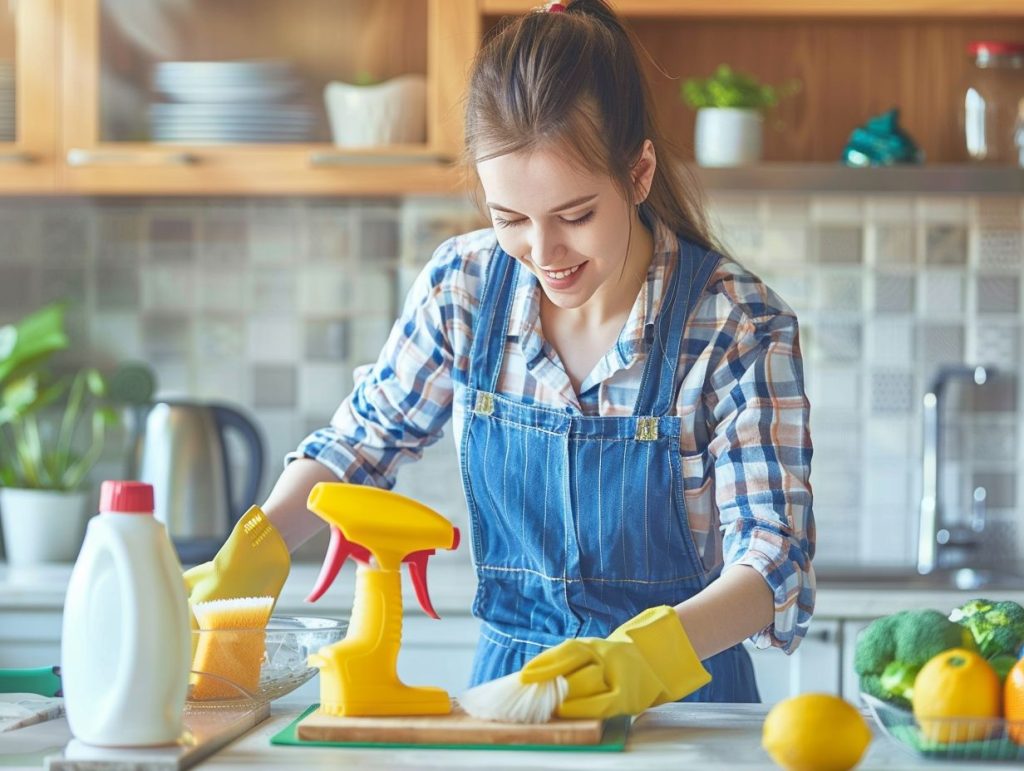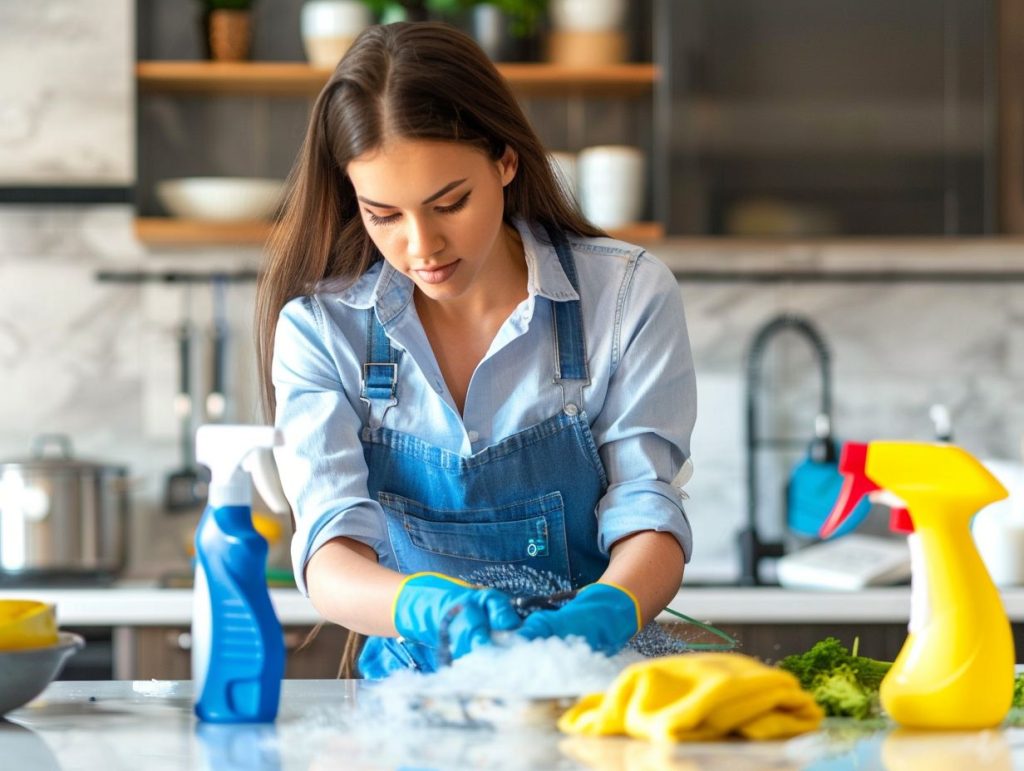End of a tenancy and its unexpected woes can feel overwhelming for landlords, especially when it comes to making sure the property gets a thorough cleaning. Some of the most common mistakes that inexperienced landlords make include not setting up clear cleaning expectations in the tenancy agreement, overlooking the importance of professional cleaning, failing to perform inventory check-ups, and overall missteps in the communication with tenants and cleaning contractors.
Understanding the ins and outs of end of tenancy cleaning is crucial to maintaining a good relationship with your tenants and protecting your investment.
Today, we will talk about the common pitfalls you might face, the essential steps to prepare for a clean, and the pros and cons of hiring professionals versus tackling it yourself. Plus, it covers how to conduct final inspections to steer clear of disputes.
Whether you’re a seasoned landlord or just starting, this information will help you make the whole process smooth and hassle-free.
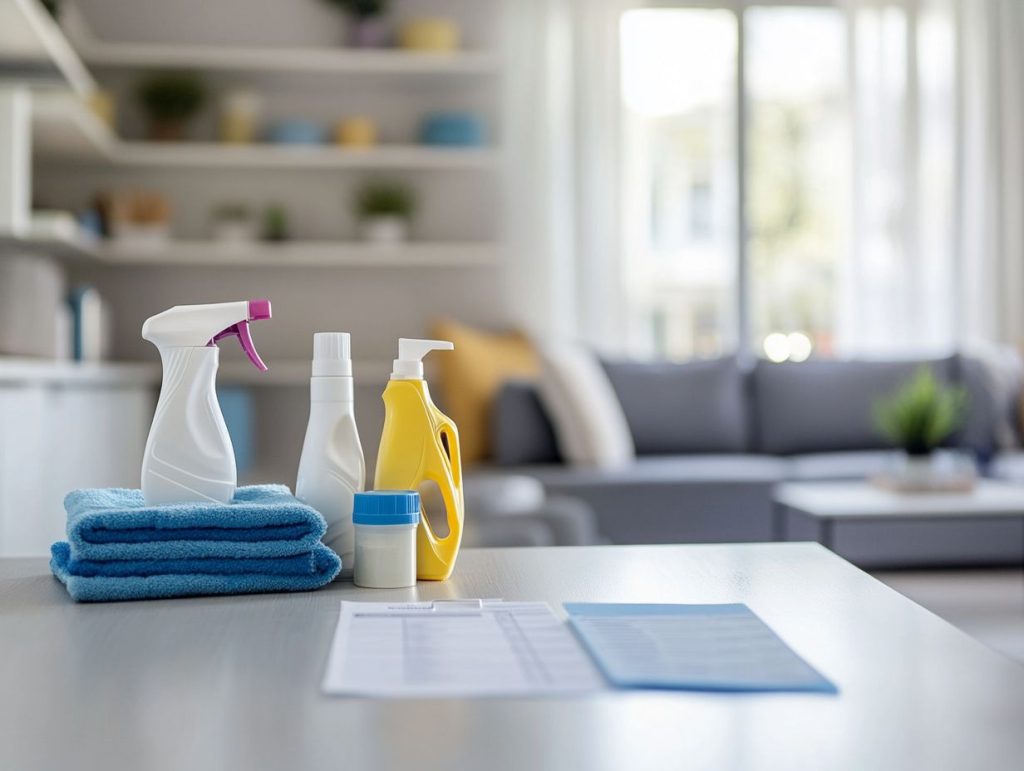
Understanding End of Tenancy Cleaning
Cleaning at the end of tenancy is an important step you need to take when moving out of a rented property. It ensures that the place is returned to its original condition and meets the cleanliness standards expected.
This means doing a thorough deep clean, which prepares the property for the next tenant, helps protect the landlord’s investment and aids in getting your deposit back.
Landlords and tenants must know their responsibilities during this transition period to avoid potential disputes.
What is it, and Why is it Important?
Move-out cleaning, or end of tenancy cleaning, is all about thoroughly cleaning your rental property before you hand over the keys. Ensuring the place meets the cleaning standards that landlords expect is important. Not only does this prepare the property for the next tenant, but it can also play a significant role in returning your deposit.
A solid move-out cleaning checklist includes:
- deep-cleaning carpets
- scrubbing down bathrooms
- dusting surfaces
- ensuring all appliances shine like new
Each of these tasks helps maintain the high cleanliness standards that landlords look for, and let’s be honest; it can help you maintain a good relationship with them.
Leaving a property in tip-top shape doesn’t just reflect well on you; it can enhance your reputation and open doors for future agreements, such as glowing references or flexibility on moving-out dates. Conversely, if you skip these cleaning tasks, you might end up in a tug-of-war over your deposit. So, it’s worth prioritising this critical step in your moving process.
Common Pitfalls for Landlords
Navigating the end of tenancy cleaning can be tricky for you as a landlord. You might find yourself stumbling over common pitfalls, such as overlooking cleaning costs that can arise, skipping thorough property inspections, or not setting cleaning expectations in your tenancy agreements.
Understanding these pitfalls is essential to prevent tenant disputes and ensure you’re in line with landlord-tenant laws.
Mistakes to Avoid
When managing a rental property, it’s important to avoid a few critical mistakes. For instance, neglecting tenant communication about cleaning agreements or failing to set explicit cleaning guarantees can bite you.
One significant oversight is not regularly discussing the expectations and responsibilities of keeping the property in good condition. This can lead to misunderstandings and some unhappy tenants. You want to keep those lines of communication wide open so tenants feel comfortable raising any concerns.
Implementing periodic cleaning reviews can be a game changer. Not only does it help you evaluate how well the cleaning is being done, but it also opens the door for constructive feedback to flow both ways. This approach creates a collaborative environment and helps you adapt to your tenants’ changing needs.
Ultimately, maintaining positive relationships with your tenants is crucial. It boosts tenant satisfaction and can lead to longer tenancy agreements and more reliable renters.
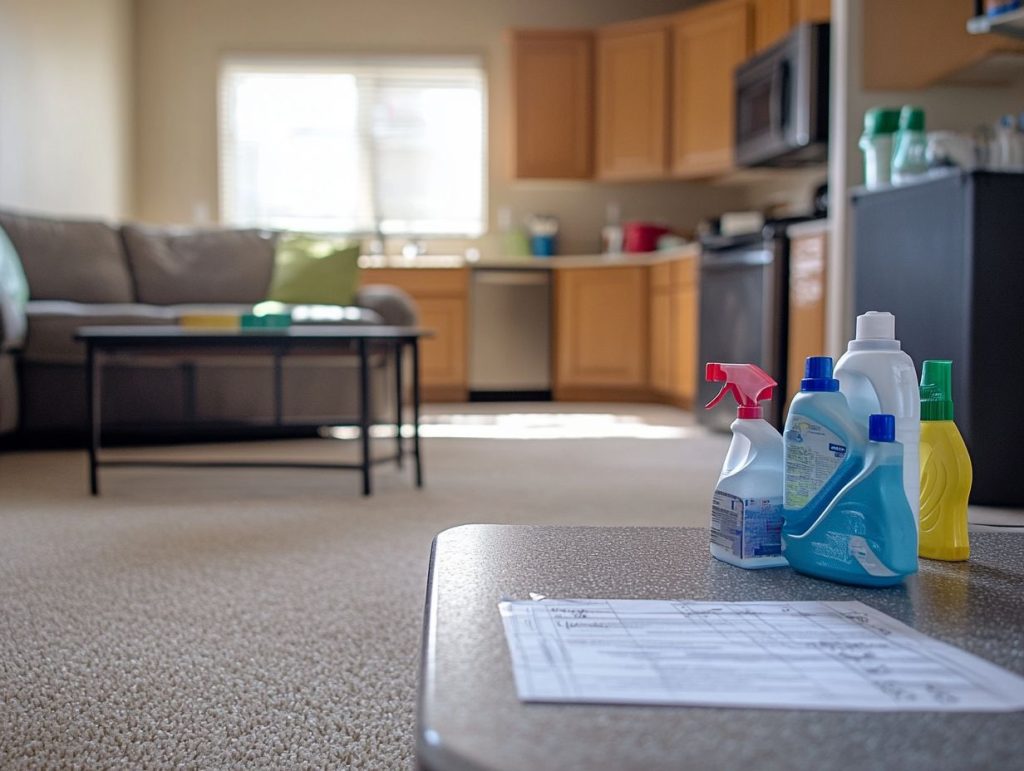
Preparing for the End of Tenancy Clean
Preparing for the end-of-tenancy cleaning is crucial to ensure the property meets the cleanliness standards everyone expects. It often begins with putting together a detailed cleaning checklist and timetable.
A solid checklist can help you lay out all the cleaning tasks you need to tackle, including any deep cleaning techniques and the right supplies for each rental property area.
Steps to Take Before the Clean
Before you dive into end of tenancy cleaning, landlords and tenants must take a few essential steps to get the property ready. Start by gathering all your cleaning documentation, creating an inspection checklist, and asking tenants for feedback on the cleaning process.
This thorough preparation makes the transition smoother for everyone involved and helps you avoid potential disputes about the property’s condition. An inspection checklist is critical here; it helps you assess every nook and cranny, ensuring nothing gets overlooked during the cleaning frenzy. Proper cleaning documentation is also crucial—it is solid evidence if disagreements arise regarding what was expected.
By documenting the condition of each room before and after the cleaning, you create a precise reference point. This makes settling any conflicts related to cleanliness and maintenance much easier. Getting tenants involved in this process also promotes accountability and transparency, ultimately building a friendlier relationship as they prepare to hand over the property.
Hiring a Professional Cleaning Service
Hiring a professional cleaning service for end of tenancy cleaning can change the game for landlords and tenants. It ensures that the property meets those industry cleaning standards and expectations.
This option not only lifts the burden of cleaning costs off your shoulders but also guarantees an exceptional clean that ticks all the boxes for a successful move-out inspection.
Benefits and Considerations
Hiring a professional cleaning service for end-of-tenancy situations has some solid benefits, such as efficient cleaning solutions, comprehensive strategies, and happier tenants. You can look at positive cleaning reviews from previous clients to help guide your decision-making process.
When choosing professional cleaners, you are often treated to a deep clean that goes beyond just surface tidying. They ensure every nook and cranny meets the standards landlords and property managers set. These services typically use specialised equipment and eco-friendly products, which are excellent for creating healthier living spaces—especially if you are sensitive to allergens.
High tenant satisfaction often comes from the significant difference a thorough cleaning can make. This can be essential in returning your deposit and even help with future rental opportunities. Additionally, reading service reviews gives you a clearer idea of what to expect, helping you find trustworthy providers focusing on quality and reliability.
DIY Cleaning Tips
Suppose you’re thinking about taking a DIY approach to end of tenancy cleaning. In that case, plenty of effective tips and techniques can save you some money while ensuring your rental property meets those cleanliness standards.
With the right cleaning supplies and a solid plan, you can efficiently tackle everything from scrubbing the kitchen to cleaning the bathroom thoroughly.
Effective and Cost-Saving Techniques
You can use effective and budget-friendly techniques for your DIY end of tenancy cleaning that won’t leave your wallet feeling empty. Consider deep cleaning methods for carpets and upholstery, along with some handy floor maintenance tips, to ensure every corner of your property shines.
To achieve the best results, vacuum your carpets thoroughly to remove any loose dirt and debris. Then, prepare a deep-cleaning solution using a mix of white vinegar and bicarbonate of soda to tackle those pesky stains. Regarding upholstery, steam cleaning is an excellent option for banishing embedded dirt without forking out expensive professional services.
Just a simple mix of warm water and dishwashing liquid for your hard floors can work wonders to lift the grime. Plus, using microfibre cloths not only boosts your cleaning efficiency but also helps you cut down on disposable materials, saving you money and reducing waste at the same time.
Final Inspection and Disputes
The final inspection process is a crucial step in end of tenancy cleaning because it can shape the outcome of any cleaning disputes between you and your landlord.
You must understand your tenant rights and your landlord’s responsibilities. This way, you can ensure that the inspection and any decisions regarding your security deposit are fair and transparent.
Ensuring a Smooth Process
To ensure your final inspection process goes smoothly, you and your landlord should use an inspection checklist outlining cleaning expectations and thoroughly assessing the property’s condition.
Going through each area of the property against the checklist allows you to identify any issues before the final evaluations. This proactive approach helps minimise misunderstandings and keeps the lines of communication open about specific cleaning tasks and repair needs. For landlords, it is helpful to include detailed criteria for cleanliness—consider what you expect in the kitchens, bathrooms, and living areas.
From your side, you can use this checklist as a helpful guide to clean and prepare the property to meet the agreed-upon standards before you move out. Collaborating in this way can lead to a hassle-free transition, reducing disputes and fostering a positive relationship between you and your landlord.

